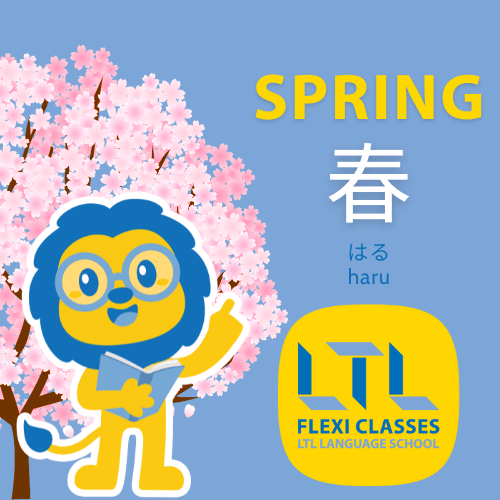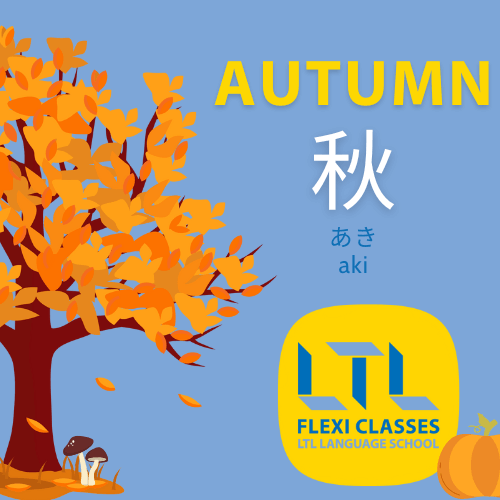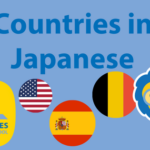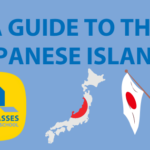A Traveller's Guide to Weather in Japan
Weather in Japan | Best Times to Travel & More

The weather in Japan is very easy to plan for, with four distinct seasons but very different climates and temperatures from north to south.
This article provides a very simple guide to help you plan your trip to Japan.
We will break down the weather in Japan by seasons, by the TOP 5 most touristic cities and give you some information you need to know before travelling.
Ready to plan your trip?
Weather in Japan || Spring
Weather in Japan || Summer
Weather in Japan || Autumn
Weather in Japan || Winter
Weather in Japan || City by City
Weather in Japan || Things You Should Know
Weather in Japan || Essential Vocabulary
Weather in Japan || FAQs
First important word you’ll learn today:
Weather in Japanese is 天気 [てんき]
Head to the end for more words
Weather Report | Spring in Japan

Spring in Japan usually lasts from March to May. It is one of the most popular time periods to visit Japan as tourists come see sakura trees in full bloom.
Temperatures are warm and average between 21°C to 26°C.
There is very little rain, making it very easy to plan for any activity.
Spring and Autumn are the best times to travel to Japan.
|| What to wear?
If you are coming at the beginning of spring make sure to pack a jacket, a sweater and a scarf as the wind is still pretty cold.
Bring a few long-sleeved shirts to make sure you are ready for the more chilly days of your trip. You’ll be able to wear T-shirts and light clothes after April.
Regarding shoes, it is too early for sandals in March so make sure to pack closed shoes. If you’re coming to Japan in April-June sandals are fine.
|| What to do?
By visiting Japan in spring you won’t be able to miss the magnificent cherry blossoms and the festivals organised around them!
Cherry blossom viewing is an activity that has its own name in Japanese: Hanami
As mentioned earlier many festivals and activities are organised this time of year, such as:
NOTE | As spring is considered the best time to visit Japan, keep in mind with your travel plans that touristic places might be more crowded at that time.
Weather Report | Summer in Japan

Summer in Japan lasts from June to August.
WEATHER ALERT || Heavy rainfall starts in June raising the humidity across the whole country.
Temperatures can rise up to 35°C depending on your location, with cooler summers in northern regions such as Hokkaido.
If you plan to do a lot of sightseeing and outdoors activities make sure to remember June is monsoon season, and as in many other countries you’ll get heavy rain most of the time.
|| What to wear?
Pack light, airy comfortable clothes to fight the heat! Make sure to also bring a light jacket as the temperature drops a few degrees at night.
TOP TIP || As it rains so much in June we advise taking shoes that can dry quickly, or a nice comfortable pair of sandals that don’t mind being under water.
|| What to do?
Summer is Japan is the time for festivals and fireworks! They are organised all over the country so wherever you go, you’ll have plenty to do.
If you like nature, hiking is a popular activity in summer, with the possibility to climb Mount Fuji or the Japanese Alps in Nagano, Gifu, and Toyama prefectures for example.
Fancy a swim? Japan is surrounded by water and thus offers many beautiful beaches all year round. Whether you visit north or south Japan, you’ll find a place to swim.
DID YOU KNOW? | Some beaches have a “beach etiquette” meaning you need to be dress a certain way or are not allowed to show any tattoos. Be sure you check for any regulations before you visit.

Weather Report | Autumn in Japan

Autumn in Japan lasts from September to November, and is another great time period to visit the country, aside from spring.
Temperatures are slowly dropping after the heat and humidity of summer.
NOTE || Autumn is typhoon season in the south region of Japan, so be sure to check ahead of your trip. You don’t want to be stuck somewhere unable to travel around as you had planned.
Trees change colour all around Japan. It’s as beautiful as the cherry blossoms and offers a beautiful sight throughout Japan.
|| What to wear?
If you’re coming in September the temperatures are still warm, and the humidity might make it feel even more uncomfortable, so pack light.
TOP TIP || Around October and November temperatures drop and layering will be your friend! Bring a jacket and some long sleeved shirts with closed shoes. No need for thick scarves and padded coat just yet.
If you’re visiting near the end of autumn, then pack extra layers as temperatures will soon drop below 10°C.
A raincoat and collapsed umbrellas would be a good idea for the occasional rainy day.
|| What to do?
Outdoor activities are very popular this time of year, especially with such beautiful landscapes to explore.
Hiking and camping are two very popular activities, as well as visiting parks to enjoy the red and orange trees.
Halloween is a big event in Japan so you won’t want to miss that either!
Festivals are still going strong in autumn in Japan. A few events you might find interesting:
- Meiji Jingu Gaien Ginkgo Festival | 神宮外苑いちょう祭り
- Sumo Grand Tournament
- Kochia Carnival
- Hokkaido Food Festival
Weather Report | Winter in Japan

Winter in Japan lasts from December to February, and is dry and particularly cold in the north because of Siberian wind.
Temperatures are not as low as you may think.
Hokkaido, the northern island of Japan has an average of only -3°C.
If you’re in Japan for the snow, head north to Hokkaido!
The northern part of Japan has a great and long snow season with ideal conditions.
|| What to wear?
Now is the time to pack your favourite sweaters, boots and padded coats!
You need to be prepared for the cold, especially in the evenings as night falls very early (around 5pm) and temperatures drop quickly.
Winters are particularly dry so make sure to pack lip balms, lotions and moisturisers.
|| What to do?
Did you know that Japan has more than 500 resorts offering winter sports and activities?
The most important resorts will be located in the northern island of Hokkaido, but you’ll find some in other parts of the country as well.
Skiing, snowboarding, ice-sculpting.. they have it all!
Make sure to check out some of Japan’s snow festivals as well:
- Sapporo Snow Festival | さっぽろ雪まつり
- Otaru Snow Light Path
- Lake Shikotsu Ice Festival
- Hirosaki Castle Snow Lantern Festival
Weather in Japan | City by City
Let’s have a look at the TOP 5 most touristic cities in Japan and their respective climates, so you can prepare what to pack:
Weather in TOKYO
Tokyo is the capital city of Japan, and the TOP most visited city of the country. And with good reason!
Did you know that Tokyo is the most populated city in the WORLD?
Summers in Tokyo are very hot and humid, starting with the monsoon season concentrated in June. Temperatures average 31°C in Tokyo, and the city sometimes experiences the consequences of typhoons, although never strongly.
Tokyo Winters are sunny and dry, with very little rain or snow. Temperatures rarely go below 0°C and average 2°C.
Autumn and Spring are often considered spectacular due to nature’s change of colour and the beautiful sights it offers. Temperatures are comfortable around 20°C and there is very little to almost no rain.
DID YOU KNOW | We now offer Japanese courses IN PERSON in Tokyo! Make sure to check our programs and contact us for more details.

Weather in OSAKA
Osaka, not to confuse with Osaka Prefecture, is the third most populated city in Japan.
Osaka is a large port city and economical centre, only 3 hours by train from Tokyo.
Due to its southern location Summers in Osaka are hotter and more humid than in Tokyo, with temperatures as high as 34°C on average, and start with the rainy season bringing a lot of humidity.
Osaka sometimes experiences a second rainy season in September and early October due to typhoons. Usually Autumn in the city is cooler after summer but quickly becomes colder as winter approaches.
Winters are considered mild, with very little to no snowfall, making it a convenient time to travel there as well.
Spring is one of the best seasons to visit Osaka thanks to its warm temperatures, although in June rainfall is frequent and lasts several days in a row.
Weather in KYOTO
Kyoto used to be the capital of Japan, and is actually very close to Osaka.
Kyoto is famous for its numerous classical Buddhist temples, imperial palaces, Shinto shrines and many other aspects of Japanese history and traditions.
Kyoto’s climate is very similar to Osaka’s, with very hot and humid Summers (average 32°C), and dry and cold Winters with no snowfall (around 5°C).
The city is prone to typhoons in Summer and Autumn and has got a mild climate in Spring (15°C to 20°C).
Weather in NAGOYA
Nagoya is Japan’s fourth most populous city and is located between Tokyo and Kyoto.
Nagoya has similar weather to Kyoto.
Summers are hot and humid with rainfall (average 32°C) and Winters are cool and dry (average 5°C).
Rain falls all year long but Spring and Autumn are still considered the best periods to visit, just like anywhere else in the country.
Temperatures average from 15°C to 25°C in Spring, and from 25°C to 10°C in Autumn.
Weather in HOKKAIDO
Hokkaido is Japan’s northern island and is famous for its volcanoes as well as natural hot springs and winter sports resorts. Its biggest city is Sapporo.
Hokkaido is the coldest region of the country, meaning its Summers are very cool with temperatures averaging from 17°C to 22°C, and is not affected by the rainy season as other parts of Japan.
Winters are very cold and snowy, especially in the northern part of the island where as much as 11 metres of snow can fall, and snowstorms are frequent.
Temperatures in Sapporo go from -4°C in December to -6°C in January/February.
Spring in Hokkaido arrives in April as snow starts to melt. Autumn starts mid-September and is usually cold, dry and very sunny.
Climate in Japan | Things You Should Know
#1 | The best month to visit Japan is…
We’ve already mentioned that Spring was the best time to visit Japan.
However, let’s get a bit more specific and say May is the best month to visit.
Cherry blossoms, or sakura, are in full bloom and the pink landscapes are magical, attracting tourists not only from the Americas and Europe, but from all over Asia as well.
If you plan to come in May or anytime in Spring, make sure to book your flights and accommodation at least 6 months in advance to be sure to find something suitable!

27 Country Names in Japanese 🌍 Your Complete Guide
Countries in Japanese – Interested in learning some country names in Japanese? Some actually translate and sound very similar to English, come and see!
#2 | Be careful of the extreme climates
Whilst Spring and Autumn are very comfortable seasons to visit the country, you might be careful if visiting during one of the other two, and need to come prepared.
In Summer the high temperatures and high humidity make it easy to get a heatstroke. Always carry water with you, bring a UV blocking foldable umbrella if you can.
In Winter depending on where you are going, temperatures can be freezing, and coupled with the very dry air you’ll need to pack some moisturiser.
If you’re going in the north of Japan, be sure to pack everything you need to battle the snow.
We can’t end this section without mentioning Typhoon Season that lasts from September to October.
Check the forecasts and Japan Meteorological Agency’s warnings, as typhoons can cause major disruptions for any form of travel.
#3 l Earthquakes do happen frequently
Fear not! Strong earthquakes are very uncommon so you will not be faced with strong danger.
Minor earthquakes however happen frequently and you could even experience one.
Nothing to worry about, as Japan has gotten very good at anticipating and preparing for earthquakes, with anti-earthquake-designed buildings and strong security measures in case anything happens.
Check what needs to be done in case of earthquakes and tsunamis before travelling, so can live peacefully!
#4 | Japan is 70% forests and mountains
When we think of Japan, we immediately think of its big cities such as Tokyo, Kyoto or Osaka, with their high-tech lifestyles, robots and ever-growing business.
But did you know that about three quarters of Japan is actually nature?
TOP TIP || Go off the beaten track and explore beyond the big metropolises. In whatever direction you go, you’ll become surrounded by nature.
#5 | Choose Haneda over Narita
Yes, we are indeed talking about airports.
Even though its name is Tokyo Narita Airport, it is NOT located in Tokyo but a nearby city located around 1 hour away from the capital.
If it’s your first time in Japan and you are unsure how to get around upon arrival, choose to arrive in Haneda Airport instead.
It is also known as Tokyo International Airport (its official name), and is located closer to the city centre with a travel journey of only 30 minutes by taxi.

A Guide to the Japanese Islands // Including Some Hidden Gems
Fun Fact to get us started, Japan is made up of 6,852 islands! Today we cover the main Japanese islands and everything they have to offer.
Weather in Japan | Essential Vocabulary
We’ve talked about the climate in Japan and how it looks like for each of the four seasons, so it is now time to dive in some important vocabulary.
Let’s start with the four seasons in Japanese:
| English | Kanji | Hiragana | Romaji |
|---|---|---|---|
| 4 seasons | 季節 | きせつ | kisetu |
| Spring | 春 | はる | haru |
| Summer | 夏 | なつ | natsu |
| Autumn | 秋 | あき | aki |
| Winter | 冬 | ふゆ | fuyu |
Here are some useful nouns related to the weather in Japanese:
| English | Kanji | Hiragana | Romaji |
|---|---|---|---|
| Sky | 空 | そら | sora |
| Sun | 太陽 | たいよう | taiyou |
| Cloud | 雲 | くも | kumo |
| Rain | 雨 | あめ | ame |
| Storm | 嵐 | あらし | arashi |
| Flash / Lighthning | 雷 | かみなり | kaminari |
| Snow | 雪 | ゆき | yuki |
| Wind | 風 | かぜ | kaze |
DID YOU KNOW? | Temperature is 温度 [おんど]
The two types of degree (度 [ど] do) in Japanese are:
| Fahrenheit | 華氏 | かし | kasi |
| Celsius | 摂氏 | せっし | sessi |
And to finish this list of essential vocabulary, here are some weather events:
| English | Kanji/Katakana | Hiragana | Romaji |
|---|---|---|---|
| Drought | 感想 | かんそう | kannsou |
| Avalanche | 雪崩 | なだれ | nadare |
| Blizzard | 猛吹雪 | もうふぶき | moufubuki |
| Hurricane | ハリケーン | はりけーん | harikēn |
| Frost | 霜 | しも | shimo |
| Hail | 雹 | ひょう | hyou |
| Snowstorm | 吹雪 | ふぶき | fubuki |
| Thunder | 雷 | かみなり | kaminari |
| Monsoon | モンスーン | もんすーん | monsūn |
And there you have it! Everything you need to know about the Climate in Japan.
Let us know in the comments where you plan to travel next!
Are you interested in travelling to China or South Korea one day as well?
If so you might want to check these out…
We wrote comprehensive guides to the weather in China and weather in South Korea too.
FREQUENTLY ASKED QUESTIONS
What is the best time to travel to Japan?
May is the best month to visit Japan in our opinion.
Cherry blossoms, or sakura, are in full bloom and the pink landscapes are magical, attracting tourists not only from the Americas and Europe but from all over Asia as well.
If you plan to come in May or anytime in Spring, make sure to book your flights and accommodation at least 6 months in advance.
What are the most touristic cities in Japan?
Some of the most touristic cities in Japan are Tokyo, Osaka, Kyoto and Nara.
Does Japan get typhoons?
Yes, typhoons occur in Japan from September to October.
Make sure to check the forecasts and Japan Meteorological Agency’s warnings, as typhoons can cause major disruptions for any form of travel.
Does Japan get earthquakes?
Yes, however strong earthquakes are very uncommon so you will not be faced with strong danger.
Minor earthquakes however happen frequently and you could even experience one.
Nothing to worry about, as Japan has gotten very good at anticipating and preparing for earthquakes, with anti-earthquake-designed buildings and strong security measures in case anything happens.
How cold is winter in Japan?
Winter in Japan lasts from December to February and is dry and particularly cold in the north because of Siberian wind.
Temperatures are not that cold though, with an average of only -3°C.
Does it snow in Japan?
It does snow in Japan but a lot more so in the northern regions.
Cities like Tokyo, Kyoto and Osaka only get very little snow.
How do you say ‘weather’ in Japanese?
Weather in Japanese is 天気 [てんき].
Want More From LTL?
WANT TO LEARN JAPANESE? Check out our online Japanese courses here.
We offer a 7-day free trial to all new students where you can study 24/7.
What about studying Japanese in Japan instead? We’ve got your back. Our Japanese courses in Tokyo can either be taken in small groups of no more than 5 students or individually for a more tailored experience.
We even offer incredible homestay experiences in Tokyo as well.
Come and be a part of this amazing community.








